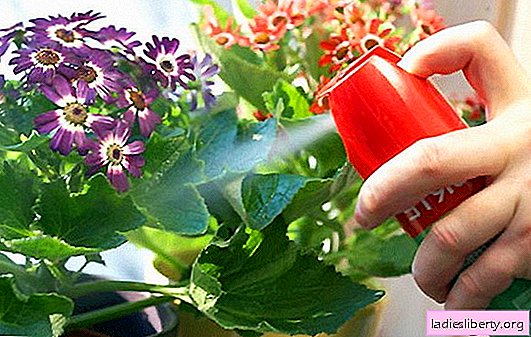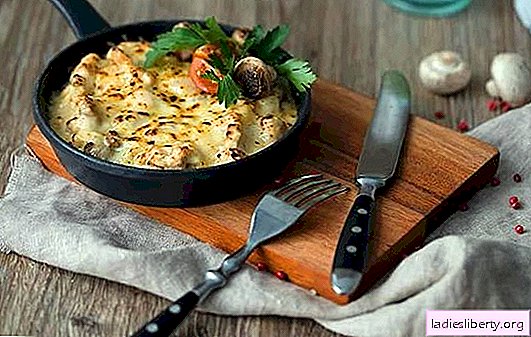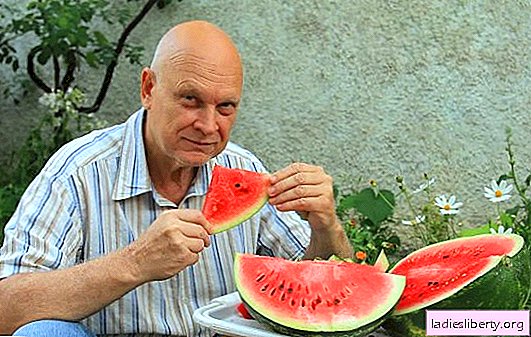
Aphid is a harmful insect that can cause great harm both in the garden and indoor plants.
It is very difficult to remove these insects, as they quickly and actively breed.
They can be found in young leaves and shoots of plants, suck juice from tissues, and can destroy a huge number of young plants.
How to get rid of aphids?
Aphids: causes and types
These numerous insects need to be classified by color and by the plants that they destroy.
Aphids can be of such colors:
gray
white
brown;
black.
The plants of these insects are classified into:
cherry aphid;
apple;
peach;
currant;
cabbage;
sorrel and many others.
If the plant on which the aphid parasitizes has run out of nutrients, the wings of the insects grow, and they fly in search of new sources of nutrition. The most susceptible plants are green pets, which are located outdoors or in a ventilated area.
In addition, aphids very often start in ordinary flower pots that stand on the windowsill. Flowers or plants that are infected with aphids are very easy to get in stores.
If you find that the plant that you recently bought in a flower shop is susceptible to infection by aphids, you need to immediately treat it with the necessary means, and also isolate it from other plants for a certain time to prevent the spread of infection.
How to get rid of domestic aphids and aphids in the area: folk remedies
In fact, there are a lot of recipes for getting rid of these harmful insects. However, most people complain that they are completely ineffective. We hasten to upset you: the recipe, according to which you would be able to destroy the aphids the first time and forever simply does not exist. However, if you regularly monitor its appearance, damage from these insects can be minimized. For example, if your aphid started up in a summer cottage, do not forget to weed beds as often as possible, this will significantly reduce the number of pests.
In addition to weeding, it is necessary to regularly treat infected plants. At the same time, it is recommended to use more and more new means so that the aphids do not have time to develop immunity from them and die. To begin with, we will analyze methods of getting rid of aphids harmless to humans and plants, namely folk remedies.
1. Celandine. Cut it finely (4 medium bushes), fill it with one bucket of warm water and add 20 g of dissolved soap or any detergent. These solutions must be infused and filtered after 3 hours. With the finished mixture, you need to spray all the infected places on the plants so that it gets on insects, that is, from bottom to top. Infected shoots can also be dipped directly into the solution.
2. Dandelion - One of the best remedies to get rid of such harmful insects as aphids, ticks and tinkers. Finely chop 300 g of leaves and rhizomes of dandelion and fill them with water (10 l) and leave them to brew for 3 hours. Then the infusion is filtered and they immediately treat the infected plants.
3. Tomato or potato tops. Finely chop 500 g of tomato tops and fill it with a bucket of water. After that, set it to boil for 30 minutes. The finished solution must be diluted in 1 liter of water. Alternatively, tomato can be replaced with potato tops. We take 1.5 g of such tops, pour into a bucket of warm water and insist, and then filter. With a solution of each of these plants, any plant can be sprayed.
4. Makhorka. Boil 100 g of tobacco in 1 liter of water, then filter. Before using the solution, it must be diluted with water in a ratio of 350 g per 1 bucket.
5. Soda solution. We take 1 tbsp. l soda, dissolve in 1 liter of water and add ¼ of a planed piece of laundry soap.
6. Hot pepper. Take 3-4 pods of pepper and boil them in 1 liter of water. Then the broth should be infused for 48 hours. Before use, the solution should be diluted in the ratio of 1 glass of water to 1 bucket of water.
7. Flask of Ash. This tool is the most effective in the fight against invasion of aphids. We take 250 g of ash and pour it with boiling water. After the solution cools down, it must be filtered and add soap or detergent. To increase efficiency, try to ensure that the solution gets into the insects themselves. Aphids cannot tolerate excess potassium, so if you properly “feed” the plant with ash and water it abundantly, the insects will begin to die in large numbers, and the plant itself will have nothing but benefit.
If your site or indoor plants are literally teeming with these insects, then it is better to use chemicals.
How to get rid of aphids in the country and indoor aphids: chemistry
The easiest way to get rid of aphids is with insecticides. These aphid preparations can be divided by type of action:
1) contact. Preparations of contact action pass through the surface of the body of the aphids and destroy it. The most famous drug contact action: Fufanon;
2) intestinal. This type of drug acts through the digestive system of insects, causing poisoning in them, and, as a result, death;
3) combined. This type combines both of the above types and is very popular among the population. The most prominent representatives of this type: Actellik, Akarin, Bankol;
4) systemic. This type of insecticide is characterized by the fact that it is well absorbed into plant cells and can withstand rains and watering for two to four weeks. Such drugs are most effective in the fight against aphids, however, they must be used with extreme caution, since they are very toxic. The most famous drugs of this type: Biotlin, Aktara, Tanrek.
Actofit is a very effective drug. It does no harm to bees, but it destroys aphids almost instantly. At the same time, it is quickly excreted from the tissues of the fruits, so you can use them after 2 days. This drug is recommended to be used alternately with bitoxibacillin insecticide, so that insects do not have time to develop immunity to it. It is also very good to fight aphids with Actara 25 WG.
Aphids on indoor flowers how to get rid and prevent the appearance
In addition to the garden and the garden, aphids very often start in indoor plants. She prefers to settle in large numbers on the underside of leaves, on buds, pedicels and near growth points, thereby sucking out all the juice from the flowers. The presence of aphids is dangerous in that it can seriously weaken a plant or flower, destroy its immunity and introduce viruses, the carriers of which these insects are.
In infected plants, leaves begin to spin and turn yellow, nodules appear, and the buds either stop growing or give birth to ugly flowers. In more mature leaves, a sticky coating begins to form, which is fraught with the appearance of a fungus. The most susceptible aphids are: fuchsias, carnations, roses, most aroid and forcing bulbous plants. Most species of these insects are carriers of viruses and can cause all sorts of abnormal manifestations in flowers, such as, for example, galls or gall-like formations.
Some helpful tips on ridding your house plants of aphids:
1) get one or several ladybugs in infected flowers: they very efficiently destroy aphids;
2) if one of your flowers is hopelessly infected and no means help, it is better to get rid of it in order to avoid infection of other crops;
3) if there is a person in your house who smokes, his help may come in handy. Put the diseased plant in a plastic bag and ask the smoker to blow smoke into it, after which you need to tie a bag and leave it all night. After a couple of such procedures, the aphid will inevitably die;
4) as mentioned above, aphids hate potassium, so take a green potash soap and wash the diseased flower with a solution. To make it, you need to take a grated piece of such soap and dissolve it in 1 liter of water.
For prevention, you can also use flea shampoo. To do this, pour 1 cap of this shampoo and dissolve in 0.5 l of water. This solution is better to spray on a plant from a spray bottle.











